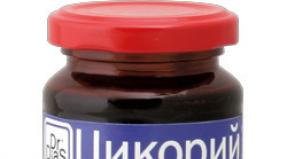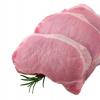Salt production. Process for processing rock salt. Prospects for the development of the salt production business
Often, novice entrepreneurs, thinking about which business to open, do not pay any attention to seemingly completely obvious industries, in particular, the processing of minerals, etc.
At the same time, many are victims of the stereotype that the development and processing of minerals is the prerogative of state-owned enterprises or large corporations. But this is far from true. Although large organizations, and even more so the state, of course, have more financial, administrative and other opportunities to develop deposits, some minerals, in particular table salt, can be mined by small enterprises.
And even if it is not possible to engage in the extraction of salt, then the processing and subsequent sale is quite within the power of a novice businessman.
The only limitation of the table salt business is geographical. As you know, most of the salt deposits in Russia are located in the Volga region, respectively, and the enterprise should be opened there - this will help to avoid unnecessary transportation costs: salt, as you know, is the cheapest (after water) food additive, so any overexpenditure included in its the cost may at some point make it unprofitable.
In fact, the salt market is extremely sensitive to any price fluctuations, for example, for gasoline or electricity: by and large, the price of salt is the sum of the costs of its extraction and packaging, and the cost of raw materials can be considered zero (there are no material costs as such, there are only the cost of mining halite - a mineral of rock salt).
In addition to the development of halite deposits, an alternative method of producing table salt is sometimes practiced - evaporation from salt water, for example, sea water, or water from saline or deliberately dried-up reservoirs - ponds and lakes. However, it becomes profitable only with large production volumes and the presence of a sufficient number of the above reservoirs.
However, despite the apparent difficulty in tracking and regulating the cost, it exists mostly in descriptions - a well-thought-out and skillfully managed salt production business requires almost no intervention: salt is not just a salable or liquid, but an almost ideal product that has a stable high demand and a virtually unlimited market, capable of absorbing any amount of output produced.
In addition, these products do not deteriorate and officially have an infinite shelf life.
The profitability of table salt production may seem low, primarily because of its price, but this is a false feeling: such a business will pay back any investment in the shortest possible time.
Technology and equipment for the production of table salt
Despite the apparent simplicity - rock salt itself is mined in almost pure form - the production of table salt requires a certain set of well-assembled and configured equipment, the quality of the resulting products and, ultimately, the profitability of the enterprise as a whole depend on the correct operation of which.
In this case, we will consider two options for equipment with similar indicators: raw material costs 1100-1150 kg per ton of product; water consumption 90-150 liters per ton of product; energy consumption of 20-30 kWh per ton of product; fuel consumption (coal, gas, diesel) of 10 kg per ton of products and a staff of 2-5 people.
Both lines are made in China by different manufacturers and differ, except for the price - 1,600,000 yuan (about 7.77 million rubles) in the first case and 2,300,000 yuan (about 11.17 million rubles) - in the second - in the range of products: the first line produces coarse edible salt, and the second, both coarse and fine (the so-called "extra") iodized or without the addition of iodine - i.e. only 4 types: large iodized, large without iodine, small iodized and small without iodine.
In addition, during the explanation of salt production technology, all prices for individual components of the production line will be given for a rough estimate of the cost of self-assembly.
As you know, no mineral is found in its pure form. Halite is no exception: foreign inclusions in the form of earth, sand, stones, metal parts, etc. is a common occurrence for him.
Therefore, raw salt, entering the processing plant, goes through several stages of purification: two washes of various types with subsequent crushing (one for coarse salt) and two without crushing (one for coarse salt).
In addition, a special magnetic separator screens out metal impurities.
For the equipment of the first stage of processing, you will need
- raw salt hopper with a capacity of 5 cu. m (price - 29,000 yuan, or about 140.9 thousand rubles),
- spiral conveyor (price - 28,000 yuan, or about 136 thousand rubles),
- belt conveyor (price -52,000 yuan, or about 252.6 thousand rubles),
- magnetic separator (price -5,000 yuan, or about 24.3 thousand rubles),
- spiral washing for salt (price - 78,000 yuan, or about 378.9 thousand rubles),
- roller crusher (price - 82,000 yuan, or about 398.3 thousand rubles),
- interfering salt washer (price - 73,000 yuan, or about 354.6 thousand rubles),
- a special industrial pump for salt (price - 41,000 yuan, or about 199.2 thousand rubles),
- brine tank (price - 14,000 yuan, or about 68 thousand rubles)
- and two pumps for brine (price - 12,000 yuan each, or about 116.6 thousand rubles for both), equipped with a special seal that is resistant to aggressive (salt) environments worth 3,000 yuan, or 14.6 thousand rubles.
Salt purified from impurities is dried using an industrial centrifuge (265,000 yuan, or about 1,287.3 thousand rubles).
Then, depending on the type of product chosen, the semi-finished product is sent either to an iodine addition unit (43,000 yuan, or about 208.9 thousand rubles) to obtain iodized salt, or through an additional spiral conveyor (41,000 yuan, or about 199.2 thousand rubles) directly into a vibration dryer (145,000 yuan, or about 704.4 thousand rubles) - to obtain coarse iodized salt and coarse salt without the addition of iodine.
If the selected type of table salt is fine, then after passing through the unit for adding iodine and vibration drying, it is subjected to additional crushing in a roller crusher (72,000 yuan, or about 349.8 thousand rubles).
As in the previous case, the iodization stage is optional - depending on whether fine salt should be iodized or not, it is added or excluded from the production process.
The final drying of the salt is carried out with the help of hot air formed in the oven (150,000 yuan, or about 728.7 thousand rubles), pumped with an industrial fan (19,000 yuan, or 92.3 thousand rubles).
However, the list of drying equipment is not limited to these two positions: in addition to the blower, you also need a cooling fan (5,000 yuan, or about 24.3 thousand rubles), an extract for exhaust air (18,000 yuan, or 87.4 thousand rubles). .), additional 3 sets of spiral conveyors (41,000 yuan each, or about 597.5 thousand rubles for everything) for moving salt between units, a rotating sieve for separating salt fractions that do not meet the fine salt standard (84,000 yuan , or about 408 thousand rubles), as well as a dust extractor (34,000 yuan, or about 165.2 thousand rubles), respectively, for salt ground into dust, which also should not be present in the final product. At the same stage, other excipients are added to the salt (also optional), for example, potassium ferrocyanide (E536 in the European food additive coding system) - a non-poisonous complex salt - as an agent that resists caking of table salt.
In addition, it is possible to add other excipients - up to about 97-98% sodium chloride content.
Most often, iodides, carbonates, and, more recently, fluorides are added. Fluoride supplementation, for example, is used to prevent dental disease.
After adding auxiliary substances, another spiral conveyor (41,000 yuan, or about 199.2 thousand rubles) delivers the finished salt of both types to a special bunker (39,000 yuan, or about 189.4 thousand rubles), from where they fall to a semi-automatic packer (85,000 yuan, or about 412.9 thousand rubles), and then to a box packing line (5,000 yuan, or about 24.3 thousand rubles) and, after passing the test at automatic control measuring instruments (scales, quality control of individual and group packaging, etc., a line with a total price of 6,000 yuan, or about 29.1 thousand rubles) are shipped to the finished product warehouse.
The above list of table salt production equipment is complete. But additional nodes and details are not listed, the task of which is to link the parts of the line together.
These include:
- connecting devices for electrical wires (105,000 yuan, or about 510.1 thousand rubles),
- thermal insulation material (26,000 yuan, or about 126.3 thousand rubles),
- valves for connecting pipes (35,000 yuan, or about 170 thousand rubles),
- coil (10,000 yuan, or about 48.6 thousand rubles),
- a set of connecting pipes (3,000 yuan, or about 14.6 thousand rubles)
- and the control panel itself (75,000 yuan, or about 364.3 thousand rubles).
With regard to ready-made lines, it can be said that their purchase (as a rule, together with the assembly service, usually carried out by the specialists of the issuing enterprise) will cost a little more than a line purchased by individual nodes and assembled on their own.
On the other hand, at this moment there is also a minus: when purchasing nodes one by one, it is easier to choose more reliable units for the most critical areas, while the quality of the units present in the line set corresponds to the quality of the worst of them - after all, when it is out of order, it will stop the entire technological chain, the strength of which depends on the strength of its weakest link.
The productivity of one line is 1 ton per hour (net weight, i.e. without packaging), so one-shift work is possible at first, but then, with the development of the business, it is possible to switch to two- or three-shift.
Prospects for the development of the salt production business
Almost all prospects for the development of salt production are prospects for a linear expansion of the volume of output. But actually, that's not all.
Firstly, now there is a (still weak in Russia) a small market trend - the so-called. "low sodium salt" (English low sodium salt). Most of these products are mixtures of sodium chloride with potassium or magnesium chlorides. It is possible to launch such a production.
Another promising area is the parallel launch of chemical production: table salt is also used to produce soda, chlorine, hydrochloric acid, sodium hydroxide and metallic sodium.
In addition, if your deposit contains not only halite, but also sylvinite, then it is possible to slightly equip the production by equipping the main line with an auxiliary one: sylvinite is a raw material for the production of potassium chloride, which is used as an agricultural fertilizer.
Productivity 1 t/h. Salt (sodium chloride) is an important element that ensures the vital activity of man and the animal world. Salt production, since ancient times, was considered a profitable and noble business.
We offer you to choose the complete set of the salt production plant that best meets your requirements.
We have three plant configurations: Econom, Standard and Full.
Distinctive features of the Econom configuration is the maximum use of the natural environment. This plant has low energy consumption. The technological process is susceptible to changes in environmental conditions. Reacts negatively to changes or deterioration in the chemical composition of salt, incl. insoluble impurities. The products produced are of varying quality and a high level of manual labor. Requires constant quality control. The production cycle of finished products is 7-14 days.
The Standard package is the best offer for manufacturers working on raw materials with high characteristics of the feedstock. In this configuration, the method of double cleaning of raw materials is used, which allows us to produce high quality products. The line is semi-automatic. Has a low rate of manual labor. The production cycle is 4-6 hours. Let out production corresponds to GOST, and also allows to trade with large federal customers and to sell salt for Export to the countries of the former CIS.
The Full package has the highest automation ratio. Production of products is based on the method of deep processing of raw materials. This line is susceptible to severe pollution, which allows you to trade with the largest foreign customers. The production cycle is 4-6 hours. Production complies with ISO quality standards. Finished products comply with GOST. This configuration allows you to trade with large federal customers and sell salt for export to the countries of the former CIS, as well as the countries of the Near and Far Abroad.
Plan-scheme of the Econom assembly plant
Plan-scheme of the plant of the Standard and Full configuration

Conclusion: in terms of return on investment, the Econom equipment line looks the most attractive. It has the smallest amount of initial investment, with the fastest return on investment. However, when choosing a configuration, it is also necessary to take into account the dependence of the production process on external factors.
Plants with Standard and Full equipment are much more resistant to changes in external factors, and therefore have a more stable production process. This, in turn, makes it possible to achieve a constant high quality of products and, as a result, the possibility of trading with large customers.
The client needs to independently assess the market in which he is going to work and who his potential client is. Further, based on this, choose the most complete package that suits you.
The composition and importance of salt
Edible table salt is a mineral, chemical element and food seasoning "in one person". Salt has been mined by man since ancient times. Once it was valued at its weight in gold - salt was protected, real wars were fought for it. Today, salt is the cheapest food seasoning, which, however, does not detract from its gastronomic and medical significance in human life. Salt firmly holds the first place in the sales of food seasonings worldwide.
Salt is sodium chloride (NaCl) in an almost pure form. The daily requirement of an adult in sodium chloride is approximately 20-25 g.
Sodium chloride is of great importance for the human body. This element is one of the components of blood, bile, cellular protoplasm, lymph, and also acts as the main regulator of osmotic pressure in the cells and tissues of the body. Salt is involved in water-salt metabolism in the human body and serves to maintain acid-base balance.
Extraction and production of salt
Studies have shown that salt is one of the almost inexhaustible resources of the Earth. At the moment, there are several ways to extract salt. According to the methods of extraction, salt is divided into several types: stone, evaporation, cage and self-planting. There are also varieties of salt: extra, higher, first, second.
Rock salt, which lies in large layers in the bowels of the Earth, is mined by a quarry or mine method. Its main characteristics are: high content of sodium chloride (up to 99%), low content of impurities, low humidity. This method of production is, along with evaporation, one of the main ones in the salt industry.
Rock salt undergoes further processing and goes on sale as table coarse salt of the highest, first or second grade. For the production of extra grade salt, rock salt is processed in a special way.
Evaporated salt is obtained by evaporating brines. The brines can be either of natural origin (extracted from the bowels of the Earth) or artificial (rock salt solution). This salt is characterized by a fine crystalline structure, a high content of sodium chloride and a small amount of impurities.
Extra salt is produced by evaporation. Evaporation of salt brine can also occur in natural or artificial conditions. To pump out the brine, a slurry pump is used - a special device designed to pump a large volume of liquids containing a certain amount of suspension. Further, the brine undergoes a thorough purification from unnecessary impurities and is processed in a vacuum chamber. At negative pressure, the boiling point of the brine decreases and it begins to actively evaporate. Salt crystals precipitate out. Further, they are separated from the rest of the liquid by means of a centrifuge, and finely ground salt is obtained, marked with the “extra” variety.
garden salt mined in the southern regions from the waters of the seas and oceans. An extensive artificial pool is being built, the water from which evaporates under the influence of solar or artificial heat, and salt crystals precipitate. This method of salt production occupies a very small share in the total salt industry - about 1-1.5%. Garden salt is distinguished by a low content of sodium chloride, a large amount of impurities and high hygroscopicity.
Self-planting salt is mined from the bottom of salt lakes. An interesting fact: the salt lakes Elton and Baskunchak, located in Russia on the territory of the Republic of Bashkortostan, are able to satisfy the salt needs of the entire population of the Earth for about 1500 years. However, due to the fact that there are few such reservoirs on Earth, this method of extraction also occupies a relatively small share in the global salt industry. Salt in salt lakes precipitates, forming large layers. Self-planting salt is characterized by a high content of natural impurities (silt, sand, clay, etc.), which gives the salt a grayish or yellowish tint.
Conclusion
Salt is necessary for the human body - it is involved in important metabolic processes. The positive effect of sodium chloride on the psyche and mental abilities of a person has also been proven. However, we should not forget that the expression "white death" did not arise in vain - the abuse of salt can cause serious diseases of the kidneys, heart, blood vessels and digestive system. When choosing salt, you should pay attention to the variety and method of production. Has a gastronomic advantage salt extra, but if we talk about usefulness, it is better to use coarse salt obtained naturally.
Salt production is a very good business idea. Salt is always a tradable and rather liquid commodity, which practically does not deteriorate, has a constant demand and an infinite shelf life. All these qualities indicate that salt is an ideal commodity, and salt processing and its subsequent sale is a good and cost-effective idea to start your business.
But the production process directly depends on the type of salt itself.
One of the healthiest is sea salt. It contains various very useful minerals. Sea salt is obtained by evaporating sea water, because it contains a huge list of salts with various additives.
If doing salt production, then in this case it is necessary to carefully consider business plan
.
In order to obtain table salt, halite, or rock salt, is needed. Basically, first they develop halite deposits, and then, after a whole specific processing process, table salt is obtained from the mined rock salt. But besides this method, the evaporation of salt from salt water is also practiced. It can be both sea water and water of saline reservoirs - lakes or ponds. However, this alternative method becomes profitable only in cases of a large number of the above reservoirs.
Halite is the mineral from which table salt is made. It, like any mineral, contains foreign inclusions in the form of sand, earth or some metal parts. For this reason, as soon as raw salt enters the plant, it first goes through several stages of purification. First, it is washed twice with various types of devices, then it goes through the crushing stage, and at the end it is washed twice again. At the same time, the magnetic separator screens out metal impurities that may be in the halite. After the salt has passed the stage of purification from impurities, it is dried using a special centrifuge.
In order to obtain large iodized salt, the resulting semi-finished product is sent to the unit for adding iodine, and then to vibration drying. If coarse salt should not be iodized, then the step of adding iodine is skipped, and the salt directly enters the vibration dryer. In the event that fine table salt is needed, then after the semi-finished product has passed the stage of adding iodine and vibration drying, it is sent to the crusher. If the fine salt is not to be iodized, then this processing step is excluded from the production process.
After the process of adding iodine and crushing, the salt is dried. This happens with the help of hot air, which is blown into the furnace by an industrial fan. Also, at this stage, you can add other excipients. These may be some food additives that resist caking of table salt, iodides, carbonates, fluorides. Fluoride supplementation is useful for preventing dental disease. At the same time, the total amount of food additives in salt should not exceed 2-3% (as a percentage).
After all auxiliary substances are added to the salt, it is completely ready for packaging.
Video - how sea salt is mined and produced:
Edible table salt is almost pure natural crystalline sodium chloride (NaCl), consisting in its pure form of 39.4% sodium and 60.0% chlorine.
Salt ranks first among spices in terms of sales volume. Sodium chloride not only changes the taste properties of food, but also has great physiological significance for the human body: it is an indispensable component of blood, lymph, bile and cellular protoplasm, serves as the main regulator of osmotic pressure in tissues and cells, regulates water-salt metabolism and acid-base balance. balance in the body, is the source of the formation of hydrochloric acid in the process of gastric secretion, etc.
The daily requirement of an adult for sodium chloride averages 10-15 g, while the actual consumption is much higher - 20-25 g per day, or up to 10 kg per year. In some diseases (for example, nephrolithiasis and hypertension), it is necessary to limit the intake of sodium chloride into the body.
Salt has a preservative effect. However, high salt concentrations (12% or more) reduce the consumer properties of products.
The natural reserves of sodium chloride on Earth are practically inexhaustible.
According to the origin and method of extraction, edible table salt is divided into rock, boiled-out, self-planting and cage salt (GOST 13830-84).
Rock salt lies in the bowels of the earth in huge layers. It is mined by mine or quarry (open) method. In the total production of table salt in the Russian Federation, its share is about 42-43%. Such salt is characterized by a low content of impurities, a high content of sodium chloride (up to 99%) and low humidity.
Evaporated salt- a product of evaporation of natural brines extracted from the bowels of the earth, or artificial brines obtained by dissolving rock salt in water injected through boreholes. The brines are cleaned of impurities and evaporated in vacuum apparatus, obtaining a vacuum salt, or in open flat vats (barks), obtaining the so-called black salt.
Evaporated salt has a fine crystalline structure. This salt, especially vacuum, is usually characterized by a high content of sodium chloride, a small amount of impurities and minimal hygroscopicity.
self-planting, or lake, salt is mined from the bottom of salt lakes. The most important deposit is the lakes Baskunchak and Elton - Bashkortostan, the reserves of which can satisfy the needs of the entire population of the Earth for about 1500 years.
In salt lake water (called brine), salt precipitates, forming layers, hence the name self-sedimentary salt. It is distinguished by the content of impurities (silt, clay, sand, etc.), which give it a yellowish or grayish tint, greater humidity and hygroscopicity.
Sadochnaya, or pool, salt is obtained in the southern regions from the water of the oceans and seas, which is diverted into shallow, but vast artificial pools. The water from the pools evaporates under the influence of solar (natural) heat, and the salt precipitates. Garden salt is distinguished by a high content of impurities and the associated high hygroscopicity and color. The share of garden salt in the total salt production is small and amounts to 1-1.5%.
By processing table salt is subdivided into fine-crystalline (evaporative), the size of the crystals is 0.5 mm; ground (stone, self-planting, cage), crystal size from 0.8 (grinding No. 0) to 4.5 mm (grinding No. 3); unground - in the form of lumps or grains up to 40 mm, iodized - fine-crystalline salt enriched with iodized potassium (25 g per 1 ton of salt).
By quality table salt is divided into four grades: extra, highest, 1st and 2nd grade.
Food table salt for retail trade is packed in consumer and transport containers. Salt is packaged (GOST 13830-84) in consumer packaging (packs, packages) from various materials, including heat-sealed materials, allowed with a net weight of 1 to 1000 g.
Packs and bags with salt are placed in transport containers: in wooden, corrugated cardboard, polymeric boxes of numbers 6-8 type I (GOST 17358-80); in paper bags of the MB, PM, VMP brands.
Edible table salt is also packaged without packaging in 4- and 5-layer paper bags VM, PM, VMP with or without a polyethylene liner (GOST 19360-74) or without it, with a net weight of 40 and 50 kg.
Characteristics of the quality of edible table salt (GOST 13830-84)
Consumer and shipping containers must be CLEAN, odorless, dry, and ensure the safety of salt during transportation.
When marking on each pack and package with salt, generally accepted details are applied directly to the package or label, and also indicate the grade and grinding, gross weight, production date; for iodized salt, in addition, - the date of the last date of sale and the inscription "Iodized", and for boiled-out - boiled-out".
And the labeling of the shipping container, in addition, indicates the number of packaging units (for group packaging) and the handling sign "Afraid of dampness", and when packaged in plastic film - the sign "Afraid of heating", but do not indicate the retail price.
Edible table salt is transported by all means of transport in covered vehicles, protected from atmospheric precipitation, in accordance with the rules for the transport of food cargo. Group packages and paper bags are transported by rail only in wagons with boxes.
When accepting edible table salt, its quality is evaluated by organoleptic and physico-chemical indicators (GOST 13830-84); test methods GOST 13685-84 and GOST 5370-58 (methods for determining the mass fraction of lead and copper). Only a homogeneous batch of salt is subjected to quality assessment.
From the batch of salt, a sample of shipping containers is selected according to GOST 18321-73 (ST SEV 1934-79) in the amount established by GOST 13830-84 in accordance with the one-stage normal control plan for the level of general control according to GOST 18242-72.
Spot samples of salt are taken from each unit of products included in the sample by introducing a probe, sampler, etc. to 3/4 of the package height. Spot samples are combined into a combined sample, and an average sample is isolated from the latter. The main method for assessing the quality of table salt in the trading network is organoleptic. At the same time, the taste of a 5% aqueous solution of salt is determined, the smell after grinding 20 g of salt in a porcelain mortar (salt temperature is not lower than 15 ° C), the appearance of the salt is visually inspected by 0.5 kg of salt scattered in a thin layer on a clean sheet paper or cleaned surface. Deviations of the net weight of packs and packages with salt from that indicated in the marking and accompanying documents with a probability of 0.95 should not exceed: ± 10% - with a weight of 1 to 5 g inclusive; ±7% - with a mass of 5 to 25 g inclusive; ±5% - with a weight of 25 to 100 g inclusive; ±3% - with a mass over 100 g.
Store edible table salt in closed, dry rooms at a relative humidity of not more than 75%, at different, but constant temperatures. Unpackaged salt is allowed to be stored on open specially prepared areas, laying it in mounds of a form convenient for storage and measurement. A ditch 30 cm wide and at least 15 cm deep should be built around the site to drain precipitation.
Guaranteed shelf life is set only for iodized salt - 6 months from the date of production. After this period, such salt is sold as ordinary food.
Salt defects arising during its storage are:
caking of salt into lumps or a solid monolith is the main defect. In this case, the salt crystals are linked. Salt caking is promoted by increased relative humidity during storage (over 75%), impurities of calcium and magnesium salts, increased pressure on salt with a large embankment height and large packaging, large storage temperature fluctuations, a decrease in the size of salt crystals, especially less than 1.2 mm. Usually caking of salt begins after 2-3 months of storage and further increases.
To reduce caking, anti-caking agents are added to the salt: potassium ferrocyanide (GOST 13830-84 approved), aluminum chloride, soda;
moistening of salt, or "leak", appearing in conditions of high humidity (over 75%), especially with a high content of impurities - magnesium and calcium salts;
foreign tastes and odors - due to the high content of various impurities (magnesium salts give a bitter taste, calcium salts - rough, alkaline, potassium salts cause nausea and headache, etc.) or storage in violation of the rules of the commodity neighborhood. Salt with impurities of iron compounds has yellow or brown tones, contributes to the rancidity of fat and the appearance of rusty spots on the product.



















